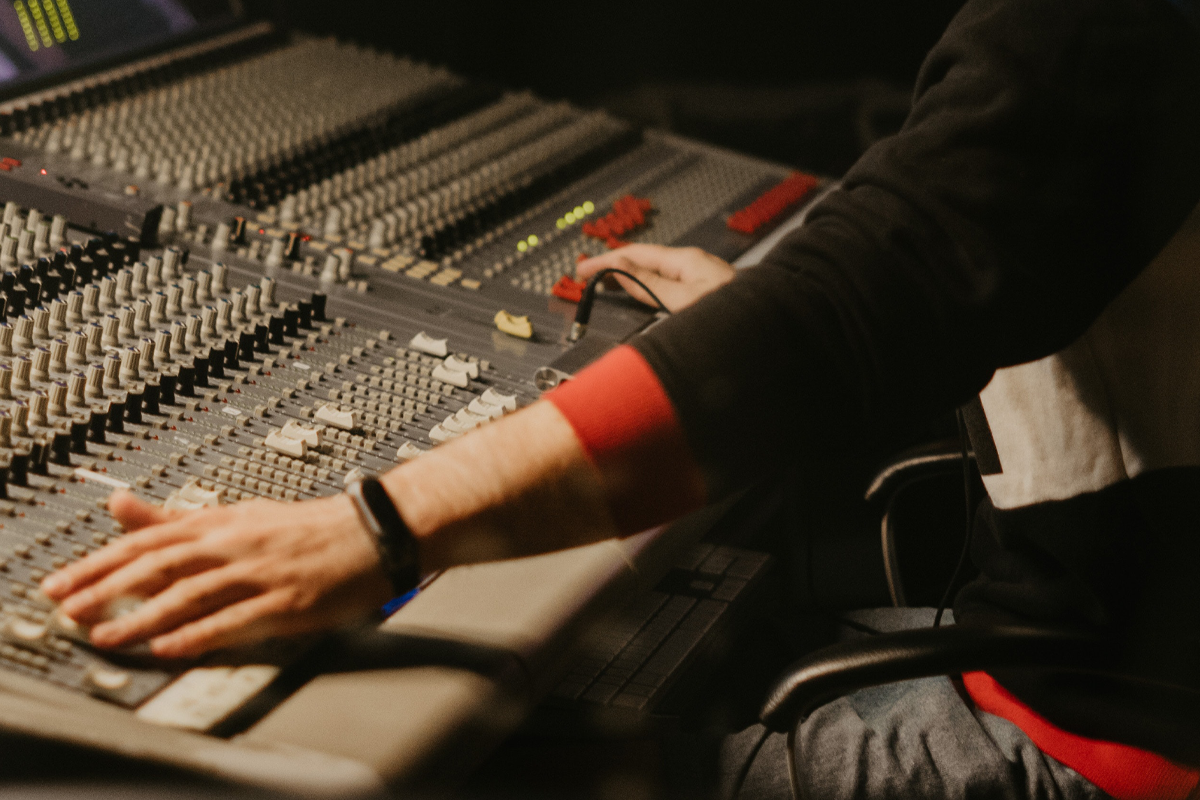
Reverb is an often essential building block of any mix, providing depth and dimension to a recording. Reverb units are devices that simulate natural reverberations, giving your tracks an organic feel. In the studio, reverb can be used to add atmosphere to a track or help instruments fit into the overall sound scape in certain genres of music.
Use moderately
When using reverb, it’s important to use it in moderation. Too much reverb can make a mix sound muddy or cluttered, and too little can leave the mix sounding flat and lifeless. Reverb should be used as an enhancement rather than a crutch – subtlety is key!
Digital reverb
In the digital age, most producers rely on software plug-ins to add reverb and other effects. These plug-ins provide a huge range of sonic possibilities, from classic analogue-style reverbs to modern algorithms designed for specific purposes.
When using reverb in a DAW (Digital Audio Workstation), it’s important to remember that the goal is to create an organic-sounding mix. It’s easy to get caught up in tweaking settings and searching for the “perfect” reverb sound, but sometimes less is more. Start with a natural-sounding reverb setting that fits the track, then tweak it as necessary.
Mix elements
When mixing a track, it can be beneficial to use different reverbs on different elements in the mix. This allows you to create a sense of space and depth that would be difficult to achieve with just one reverb setting. You can also use stereo reverb plug-ins to give your track a wider, more expansive sound.
Automate
One of the most important aspects of using reverb is automation. Automating reverb can make a mix sound more realistic, as if it were being performed live in a room. For example, you might want to automate the reverb on a vocal track so that it fades out during quiet moments and swells back in when the vocalist is singing louder passages.
Referencing
Finally, be sure to reference your mixes on different speakers and headphones. Reverb plug-ins often sound different on different systems, so it’s important to make sure your mix sounds balanced and natural no matter where it is heard.
Finally
Reverb is an essential ingredient in any mix, but when used properly it can be a powerful tool for creating unique sonic landscapes. With the right plug-ins and a bit of patience, you can create mixes that are truly beautiful and unique. So get experimenting and find out what reverb can do for your music!
10 point guide
Here’s our 10 point guide to help you apply reverb when mixing.
1. Understand the purpose of reverb:
Reverb is frequently utilised to give an audio mix a sense of depth and space. It imitates the way sound reflects naturally in a space or setting, including small vocal booths, halls, and much more.
2. Choose the right type of reverb:
Different forms of reverb, including hall, chamber, and plate, are appropriate for various audio formats. For instance, a hall reverb might work well for an orchestral recording or a chamber reverb for a vocal track.
3. Adjust the decay time:
The amount of time it takes for the reverb to disappear is called the decay time, sometimes known as the reverb tail. Depending on the desired effect, adjusting this parameter will help to produce either a feeling of intimacy or grandeur depending on it’s application.
4. Use a reverb bus (bussing):
A separate audio channel called a “reverb bus” is used to simultaneously add reverb across a mix. By doing so, you can produce a cohesive sound and prevent excessive reverb and consequent muddy resonance. Bussing often glues a mix together and can sound great when applied well.
5. Experiment with pre-delay:
The pre-delay is the interval between the original source audio and the onset of the reverb. Pre-delay experimentation can help in establishing a sense of separation between the original sound and the reverb and adding dynamics.
6. Adjust the damping:
Damping determines the frequency at which the reverb decays, or how quickly the various frequencies in the reverb tail fade away. High frequencies in the reverb tail will decay more quickly than low frequencies when the damping is set to a high value, producing a reverb sound that is less bright and more muted. Contrary to this, when the damping is set to a low value, low frequencies will decay faster compared to high, resulting in a reverb sound that is brighter and more pronounced.
7. Use EQ to shape the sound:
EQ can be used to shape the sound of the reverb and cut any unwanted frequencies. For example, cutting low frequencies will help to reduce muddiness, while boosting high frequencies adds clarity.
8. Use reverb to create depth:
Reverb is used to create a sense of depth in a mix. Placing a sound further away can be achieved by using a longer decay time and a larger reverb size. Hall reverb can be used to great effect and is capable of creating huge spacial sounds depending on the desired effect.
9. Use automation:
Automation can be used to adjust the level of reverb over time. This can help to create a sense of movement and change in a mix that can build throughout the track.
10. Use reverb sparingly:
Too much reverb can make a mix sound muddy and washed out. Use reverb carefully, and try to use a balance of dry and wet sounds to achieve a balanced and coherent sound.
